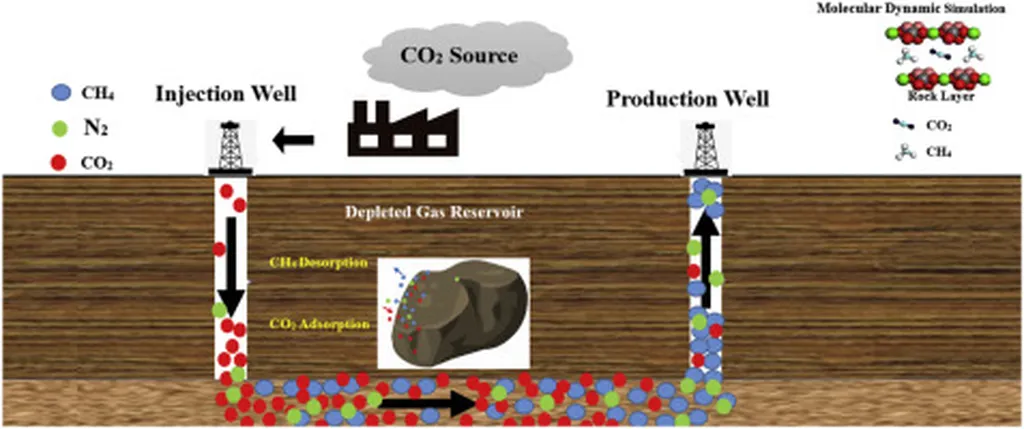In the quest to mitigate climate change and boost energy production, a recent study published in the journal *Energies* offers promising insights into the potential of carbon dioxide (CO₂) injection techniques in shale formations. Led by Nazerke Zhumakhanova from the Petroleum Engineering Department at Satbayev University in Almaty, Kazakhstan, the research compares two CO₂ injection strategies—flooding and huff-and-puff (H&P)—to determine their effectiveness in enhancing gas recovery and sequestering CO₂.
The study employs numerical simulation models to evaluate the performance of these techniques under various conditions. Zhumakhanova explains, “Our findings suggest that CO₂ huff-and-puff can improve methane recovery by up to 9% when adsorption is considered, with 14% of the injected CO₂ stored over 40 years.” This is a significant improvement over scenarios where adsorption and molecular diffusion are not accounted for, highlighting the importance of these mechanisms in the process.
However, the study also reveals that CO₂ flooding outperforms huff-and-uff in both methane production and CO₂ storage. “CO₂ flooding improves methane production by 26% and retains up to 94% of the injected CO₂,” Zhumakhanova notes. This method is particularly effective in reservoirs with high porosity and low permeability, especially in nano-scale pore systems.
The implications for the energy sector are substantial. Enhanced gas recovery (EGR) techniques like these can simultaneously boost hydrocarbon production and contribute to CO₂ sequestration, addressing both energy demands and environmental concerns. “This research provides a roadmap for optimizing CO₂ injection strategies in shale formations,” Zhumakhanova says. “It offers a viable path for the energy industry to enhance production while playing a role in climate change mitigation.”
As the world seeks sustainable energy solutions, this study underscores the potential of CO₂ injection techniques to shape the future of the energy sector. By leveraging these methods, companies can not only improve their bottom line but also contribute to a cleaner environment. The research, published in *Energies*, serves as a crucial step forward in the ongoing effort to balance energy production with environmental stewardship.

